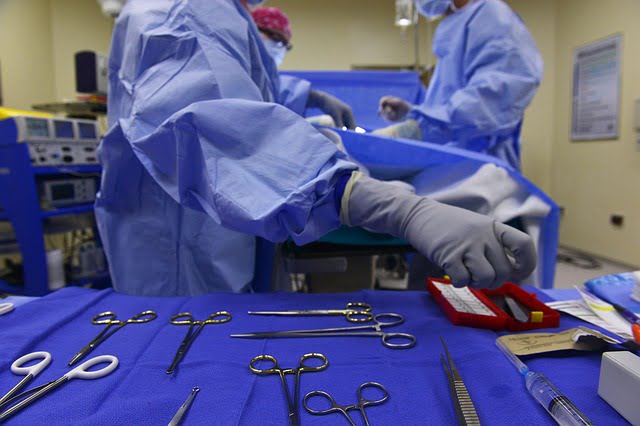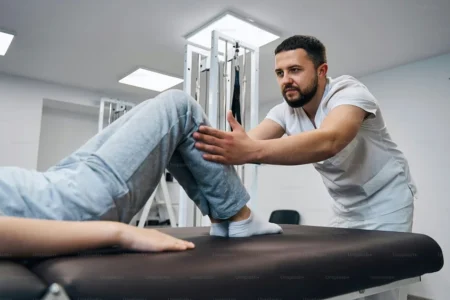What is Laminectomy?
Laminectomy is surgery that is done to create a space by removing the lamina. Lamina is the back part of the vertebra that covers the spinal canal. It is also known as decompression surgery. It helps relieve compression on the spinal cord.
Your doctor will also remove bone spurs during the surgery. Bone spurs cause extra pressure on the spinal cord or nerve roots, which can cause many problems such as back pain, difficulty in walking, numbness, etc.
Other terms used for laminectomy are:
- Decompression surgery
- Lumbar laminectomy
- Cervical laminectomy
- Decompression laminectomy
See also: Sciatica Pain Relief: What to do for Sciatica Pain?
When is a laminectomy performed?
A laminectomy is done only if the symptoms affect daily life significantly and when other less invasive treatments have failed to relieve the symptoms.
Purpose of Laminectomy: Why Is a Laminectomy performed?
Laminectomy surgery is generally done in case of spinal stenosis that causes back pain or other symptoms that do not go away with other treatments. In spinal stenosis, your spinal column narrows and puts pressure on the spinal cord or nerves. Spinal stenosis may be caused by many reasons such as:
- Paget’s disease of the bones
- Achondroplasia, a disease characterized by a type of dwarfism
- Herniated or slipped disc
- A tumor in the spine (Bone Tumors or Cancers)
- Trauma or injury
- Shrinking of the discs of the spine, with aging
- Inflammation of the bones and ligaments, which with aging
- Arthritis
- A congenital defect, such as abnormal growth of the spine in some kids
Read more about Spinal Stenosis.
Preparing for Laminectomy
Before the surgery, your doctor may ask you to:
- stop taking certain medicines such as blood thinners
- stop eating or drinking several few hours before the surgery
- stop smoking if you are a smoker
- arrange for someone to drive you home after the surgery
You should let your doctor know if:
- you are taking any medicines
- you are allergic to any drug or therapy etc
- you are pregnant or plan to become pregnant soon
Procedure: How is a laminectomy surgery performed?
Most laminectomies are performed with general anesthesia and mechanical ventilation. The procedure will go like this:
An anesthesiologist first will place a mask over your face and deliver a mix of oxygen and anesthetic gas. You may also be given medicines to help you relax if needed. A plastic tube is then inserted through your mouth and vocal cords, into your windpipe, or trachea. You will feel no pain during the procedure. Your anesthesiologist will monitor you continuously.
You are kept constantly on mechanical ventilator to pump air in and out of your lungs. Your vital signs of life will be monitored throughout the surgery.
The surgeon will then perform the operation on your back. You will be rolled over so that the access to back is possible.
An incision is made in the skin of your back near the affected area. The muscles, ligaments, and soft tissues around the spine are moved aside to expose the spine and allow direct access to it for better view of the region. The surgeon will then remove any bone overgrowths or spurs or disc fragments etc that are causing the compression of nerve or spinal stenosis. He or she will remove part of or the entire lamina bones on your spine.
The incision will then be closed with stitches and covered with bandages.
Your surgeon may also perform spinal fusion during the surgery. In spinal fusion, two or more bones are connected in the back to stabilize your spine better. A foraminotomy may also be done to widen the area where the nerve roots enter the spine.
After laminectomy/Recovery: When can I return to normal activities after laminectomy?
After laminectomy surgery is complete, you’re taken to a recovery room where an entire care team watches you for complications from the surgery and anesthesia. Your vital signs are also monitored regularly. Your will be given medication to relieve pain.
You may be allowed to go home the same day in some cases. But in most cases, you may need a short stay in the hospital.
Your doctor may recommend physical therapy after a laminectomy to improve your strength and flexibility.
You are not allowed to do all the routine activities just after the surgery. You may be asked to limit activities that involve lifting, bending and stooping for several months after the surgery. You may be able to return to work within a few weeks if the job does not require tasks such as bending or lifting etc that are avoided for several months after the surgery.
But if you also had spinal fusion, your recovery time may be longer. It may require six months to your normal activities.
You should:
- be careful when climbing stairs
- gradually increase your activities, such as walking as your strength builds to bear them
- also schedule regular follow-up appointments to monitor the after effects of the surgery
Results of the surgery: What to expect after the laminectomy?
Most people notice significant improvement in their symptoms after laminectomy. However, the benefits from the surgery may lessen over time as the spine continues to age.
Laminectomy is more effective in certain cases such as in improving leg pain caused by a compressed nerve than back pain.
A laminectomy is often effective in relieving many symptoms of spinal stenosis. However, it can’t prevent spine problems in the future and it may not completely relieve pain in everyone. People who also have a spinal fusion are more likely to have spinal problems even after the surgery.
Sometimes, the procedure remains unsuccessful and it may cause complications such as paralysis of a body part due to nerve damage during the surgery.
Risks of Laminectomy (Lumbar Laminectomy Surgery) for spinal stenosis
The risks of spine surgery (laminectomy) are:
- damage to a spinal nerve
- bleeding
- blood clots
- nerve injury that can lead to paralysis of a body part
- pain that persists even after the surgery
- back pain may return , particularly if spinal fusion is done
- an infection in the surgical site or vertebral bones (bone infection)
- spinal fluid leak: a cerebrospinal fluid leak because of a tear of the dura mater can occur, which can cause serious complications
- the treatment can be unsuccessful in some cases
Call your doctor
Call your doctor if you notice any signs of:
- chest pain
- a high fever
- a loss of bowel or urinary control
- swelling in the legs
- swelling near the incision site
- difficulty in breathing
- difficulty in urinating







1 Comment
Thank you for your sharing. I am worried that I lack creative ideas. It is your article that makes me full of hope. Thank you. But, I have a question, can you help me?